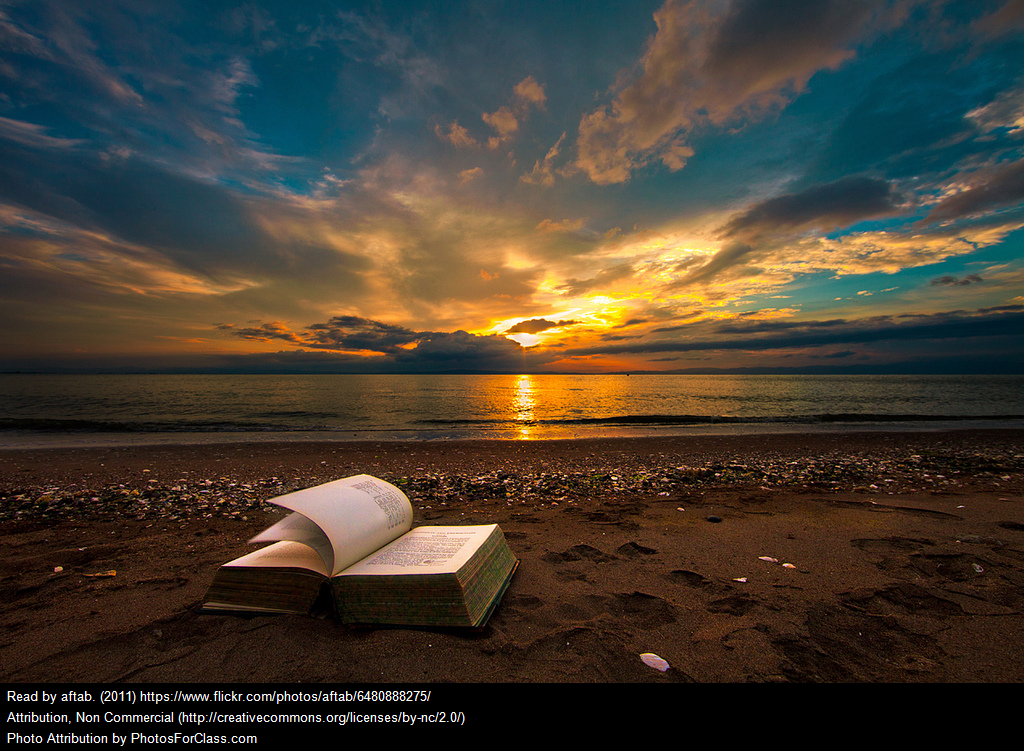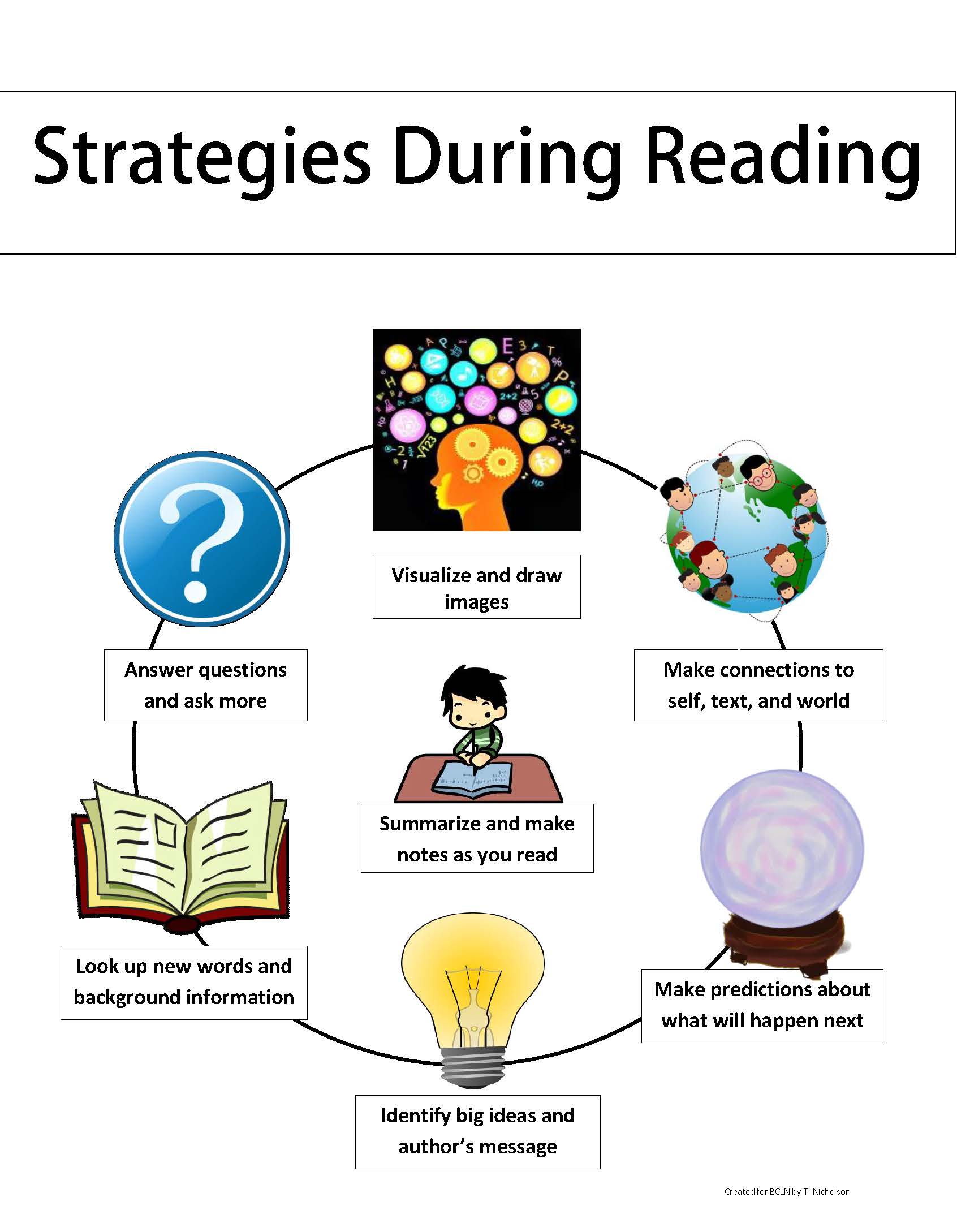1.3 Strategies During Reading
| Site: | Cowichan Valley School District - Moodle |
| Course: | ELA5, CSS, Sferrazza |
| Book: | 1.3 Strategies During Reading |
| Printed by: | Guest user |
| Date: | Wednesday, 7 January 2026, 5:35 AM |
Description
Can you...

Learning Targets
By the end of lessons 1.1 to 1.4, you should be able to say YES to the following questions.
- Can I construct meaningful personal connections to what I am reading?
- Can I understand the importance of reading strategies before, after, and during reading?
- Can I implement reading strategies to improve my reading experience and understanding of my online instructions?
- Can I implement reading strategies to improve my reading experience and understanding of literature within my course?

Strategies During Reading
 You have done your pre-reading and now it is time to dig deeply into your text! This is the stage where you take notes and draw images to help you process and remember what you are reading. This is the stage where you try to figure out new words and look up new ones if you can't figure it out from the reading context. Read on!
You have done your pre-reading and now it is time to dig deeply into your text! This is the stage where you take notes and draw images to help you process and remember what you are reading. This is the stage where you try to figure out new words and look up new ones if you can't figure it out from the reading context. Read on!
Strategies During Reading
Refer to this poster for strategies to help you during reading. If you struggle with reading, you may wish to print this poster and put it on your wall to get ideas when you are reading challenging text.

Summarize and Make Notes
Summarize and make notes about what you are reading. You do not need to rewrite the book! You want to make point form ideas or a short summary so you can remember what happened in a unit or chapter.
There are many ways to do this. Experiment with the following:
If it is a book you own, you can write in the margins of the book and highlight important ideas.
Use sticky notes. As you read something important, stick a sticky note on that page and jot notes down about what you found.
Have a notebook that you take notes down in as you go.
Record yourself! As you read something of importance, use any kind of recording system and record the snippets of important details as you go.
Visualize and Draw Pictures
As you read, you want to visualize. Good readers try to visualize or picture what they are reading. You want to make pictures and create your own "movie" in your mind.
Our brains are attracted to images - so what a better idea than to draw images to help you remember what you read!
Here are some strategies:
When you find you are really visualizing something, do a quick drawing by the paragraph in the book. It does not have to be anything fancy - just a stick figure will do.
If you are not allowed to draw in the book, you can do it on a sticky note or in notebook where you are taking down notes about what you are reading.
You can cut images from a magazine to go with what you reading.
You can also look online for images, print them off, and glue them into your notebook. You can create a collage of images for each unit or chapter either in paper format or on a computer document.
You can draw specific scenes that captured your attention.
Make Connections
As you read, think about how this information relates to what you already know.
What do you know about this topic already?
Does this text remind you of something you or someone you know has experienced?
Does it remind you of another book or movie you have seen?
Does it remind you of something that happened in your community or in other parts of the world?
Relating what you read to what you already know helps you visualize and understand the information better.
Make Predictions
Make predictions! This means giving your best guess (based on what you have read so far) about what will happen next.
You are not expected to be a fortuneteller, but it's fun to try. Also, predicting is helpful for engaging your brain.
After you read a paragraph or a page, before you read further, predict what you think will happen next.
If the end of a chapter ends in a cliffhanger, imagine what you think will happen next. Then go on to the next page to see if your guess was right.
Look for Big Ideas
As you read, you want to be looking for the important ideas. You want to figure out what the author's message is.
Look at the title, especially for newspaper articles and short stories - the title is often about the main idea.
Book covers and pictures in the book often reflect important information.
Look at the first and last sentences of paragraphs. This is particularly important in textbook reading. Remember how you are taught to write a paragraph where the first and sometimes last sentences summarize your main idea? Inside the paragraph will be the supporting details. Look for this structure to help you identify key ideas.
Look Up New Words
Most of the time when you read, you can figure out an unknown word by the context of the other words around it. You can use context clues. For example:
The steak was chewy as leather, so I cut it into small pieces using a fork and aen cooto.
(Did you guess that aen cooto is a knife? If so, you are right! You used the context clues and learned a little Michif too! It is the language of the Métis.)
But sometimes this does not work. In these cases, use a dictionary or do an Internet search of the word (with adult approval).
Also, sometimes an interesting topic might come up and you want to learn more about it. It never hurts to research background information to get a deeper understanding about what you are reading.
Ask Questions
Questions help you stay interested and keep you focused. Here are some examples:
If you are reading a textbook or informational text, ask yourself what questions you think the teacher would ask about what you are reading. Then see if you can find the answers. You can also read assignments BEFORE doing a lesson so you know exactly what to look for!
If you are reading a short story or book, ask yourself questions while you read. Do I like the main character? Do I like what is happening to the character so far? What do I think the character should do? How is the setting important? What will happen next?
Example: Notes & Images Created During Reading
Here is an example of notes and images created during the reading of the page on Adverbs in 1.8 Parts of Speech.
Connection: I think adverbs make writing more descriptive. They remind me of good poems or stories.
Your Turn!
Now it is your turn. You are going to take notes on adjectives. Use the Strategies During Reading poster to guide you and give you ideas about what to record.
You will need to go this page about adjectives for this assignment.
You have a choice about how you create your notes and images. You can write or type your notes. You can draw images (as in quick sketches, not art projects) or glue on pictures from magazines or the Internet. You could also choose to do your notes in a word document and add pictures from the Internet (with home facilitator approval).
Ideally for all your online courses, you are taking notes and making images on paper or in your mind as you read. This will help you process the information and provide study notes for you later.
Check your work over for spelling, grammar, capitalization and punctuation. You can write notes in point form.
Keep this work as you will need to use it to create a poster and to hand in as well.
Submit your finished work at
![]()